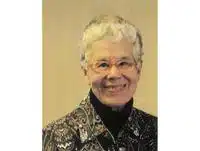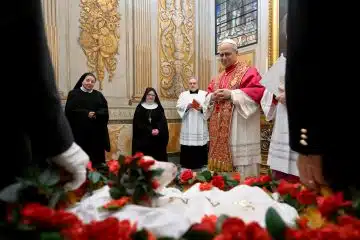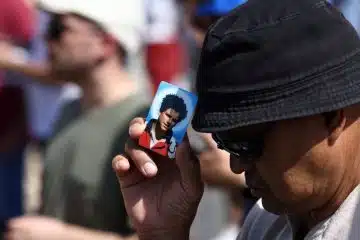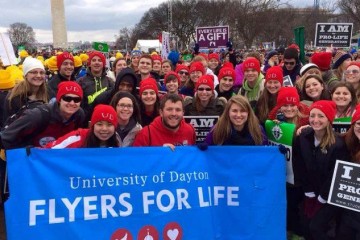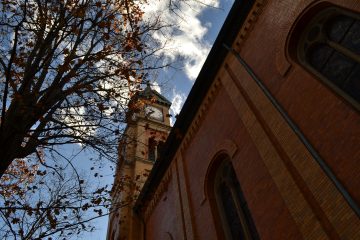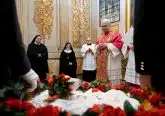In Lebanon, Muslims and Christians visit Marian shrine at Harissa

IMAGE: CNS/Dalia Khamissy
By Doreen Abi Raad
HARISSA, Lebanon (CNS) — High on a summit overlooking the Mediterranean, Our Lady of Lebanon stands majestically with her arms outstretched, welcoming her children.
Muslims and Christians alike come to the shrine, 16 miles north of Beirut.
To Muslims, Mary is known in Arabic as “Seidatna Maryam,” Our Lady Mary. Even though Muslims do not believe that Jesus is the Son of God, in the Quran, a chapter is devoted to Maryam.
In Lebanon, the feast of the Annunciation, March 25, is celebrated by Christians and Muslims as a national holiday.
Some Muslims come to Harissa for tourism to enjoy the spectacular views from the shrine’s 1,886-foot summit, and some Muslims even visit its churches to pray, said Maronite Father Younen Obeid, rector of Harissa.
“It depends on each person. But for sure, all of them have a big respect for Mary,” he said of the Muslim visitors.
At times, one can see as many Muslim pilgrims in Harissa as Christian. Thousands of Muslim pilgrims come from Iran each year, for example.
During the Marian month of May, the shrine receives about 1 million visitors, Father Obeid said. For Lebanese, particularly Maronite Catholics who have a deep devotion to Mary, this May pilgrimage is an annual tradition.
Marie Rose Hajj Boutros, a Maronite Catholic, has fond childhood memories of her parents taking her and her four siblings to Harissa several times each month.
“You find peace here,” Hajj Boutros, 45, told Catholic News Service during a visit to the shrine with her Bible study group. “It’s like you are under the Virgin’s mantle, under her protection. When you come to Harissa, you feel like your problem will be solved.”
As part of the Bible study group’s annual May pilgrimage, the eight ladies first prayed the rosary, offering intentions for their families, Lebanon, the Middle East and the world. They then climbed the 103 spiraling steps — with a guitar in tow — to sing Marian hymns in English at the feet of the Blessed Mother.
“As soon as we started singing, a bird flew over the Virgin’s crown and a cloud enveloped us,” Hajj Boutros recounted. “It was beautiful. For us, it was a symbol of the presence of God.”
Hajj Boutros relayed how a group of Muslim teenagers, visiting the shrine as part of a school trip, “listened intently to our hymns.”
“It’s nice to see how Our Lady can unite us, Christian and Muslim. She’s the mother of us all,” Hajj Boutros said.
The shrine’s origins trace to 1904, when Maronite Catholic Patriarch Elias El-Hoyek and the Vatican nuncio to Lebanon decided to commission a token of devotion to Mary on the 50th anniversary of the dogmatic proclamation of the Immaculate Conception. The statue was consecrated in May 1908.
The statue, molten bronze painted white, was crafted in Lyon, France. It is 27.8 feet high, 18 feet wide. The stone base, or pedestal, is 65.6-feet high, with steps spiraling up to the statue. Many Christian pilgrims leave their shoes at the foot of the pedestal and make their way up barefoot, as a sacrifice.
One 21-year-old Sunni Muslim university student from Beirut, who identified herself only as Zeina, visited Harissa for the second time in May with her Maronite Catholic friend, Charbel Eid, who introduced her to the shrine less than a month earlier.
“This time I suggested it, but Charbel brought me here,” Zeina said, expressing their mutual desire to be at Harissa. Zeina asked that CNS not publish her name because her family is not aware that she is dating a Christian.
“My family is very traditional,” she said.
Dressed in a hijab, color-coordinated with her T-shirt, Zeina said that during this visit, she entered the Mother of Light Chapel at the base of the statue’s pedestal.
“I felt a little awkward at first, but the people there weren’t bothered at all by my presence, and that made me feel comfortable,” she said.
“Honestly, I came here to pray and to ask many things of Maryam al Aadra (the Virgin Mary). I asked her to protect the people I love and to make clear for me the way I should go. I prayed at her feet,” Zeina said.
“I lit a candle for the first time,” she proudly added. “I hope what I came here for will happen and that I can stay positive.”
Eid said he considers Mary “the most important person in my life,” and he visits Harissa frequently. “When I’m sad, I come here. When I’m happy also,” he said.
Most Christian pilgrims come to Harissa “to pray about their troubles or problems, to ask the Virgin Mary for something, to give thanks, to cry,” said Father Obeid.
Many go to Mass and to Confession. Nine priests staff Harissa for the sacraments and for spiritual direction, and the shrine offers an extensive Mass schedule, with ongoing confessions: on weekdays, seven Masses and 18 hours of confession; on Sundays, 12 Masses and 20 hours of confession. Harissa is open 24 hours, every day.
During a special Mass June 12 in Harissa’s basilica — which seats 3,000 people — Cardinal Bechara Rai, Maronite patriarch, will reconsecrate Lebanon to the Immaculate Heart of Mary. Cardinal Rai has renewed the consecration there each year since the first time he consecrated the country, June 13, 2013.
– – –
Copyright © 2016 Catholic News Service/U.S. Conference of Catholic Bishops. www.catholicnews.com. All rights reserved. Republishing or redistributing of CNS content, including by framing or similar means without prior permission, is prohibited. You may link to stories on our public site. This copy is for your personal, non-commercial use only. To request permission for republishing or redistributing of CNS content, please contact permissions at [email protected].


